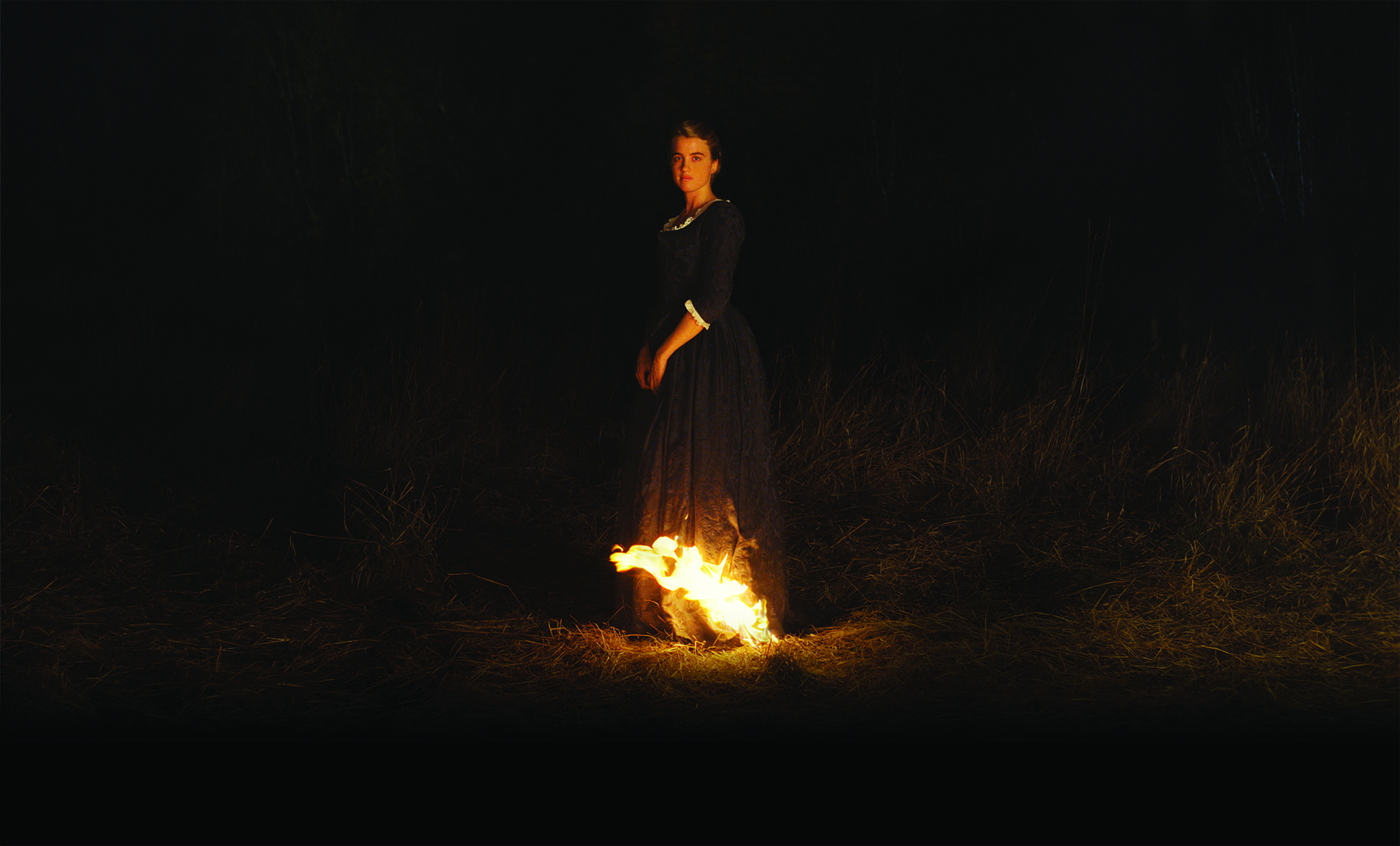I try not to mansplain things. But being a male reviewing Portrait of a Lady on Fire makes me feel as if I?m doing so. That is not to say that the film needs mansplaining. Writer director C?line Sciamma has crafted a wonderful story of women seeking love and fulfilment in a world that treats them as beings of lesser value. Although the film is set in the 18th century, the emotive underpinnings of the story are immortal (as is seen in the way Greek mythology is brought in as well).
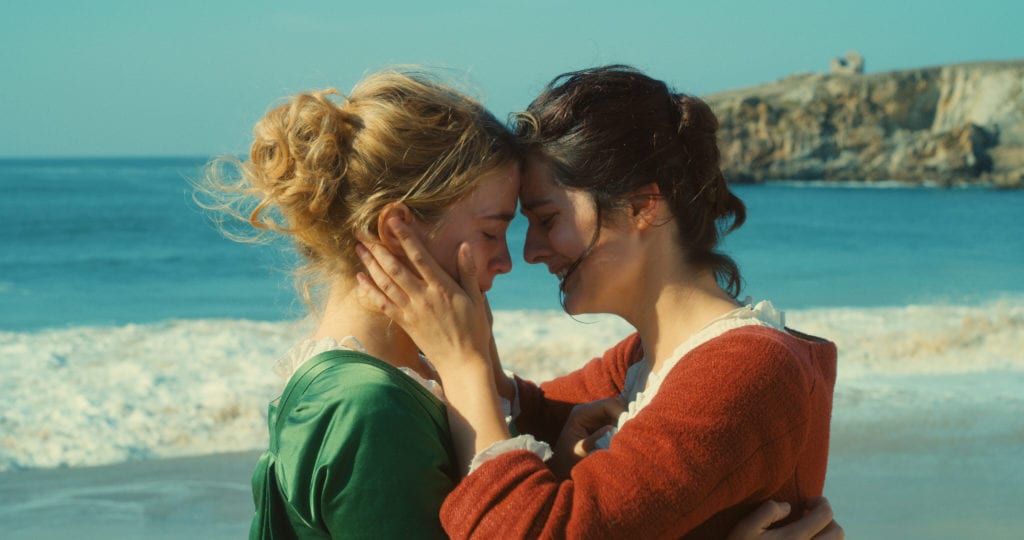
Marianne (No?mie Merlant) has been commissioned to paint a wedding portrait of H?lo?se (Ad?le Haenel). H?lo?se?s mother (Valeria Golino) has arranged a favorable marriage of her daughter to a man in her native Milan. Originally it was to be H?lo?se?s sister, but after her death (possibly suicide to avoid marriage) H?lo?se is brought home from the convent. She, too, is uninterested in this marriage, and has refused to sit for a portrait. So Marianne has been called to be a companion, and surreptitiously paint her.
The two women spend their days together, slowly establishing a bond. After confessing to H?lo?se, Marianne destroys the painting, but H?lo?se agrees to sit for another. While her mother is away for a week, the two women continue to get to understand each other and their relationship develops into romantic and sexual love. But still, H?lo?se?s marriage looms as a given that darkens the possibilities of their happiness. As the romance blossoms, the love the two women share is clearly not acceptable to the world around them. Their love will not be allowed to interfere with the arrangements that have been made for the marriage. But that love is the truest they will ever have.
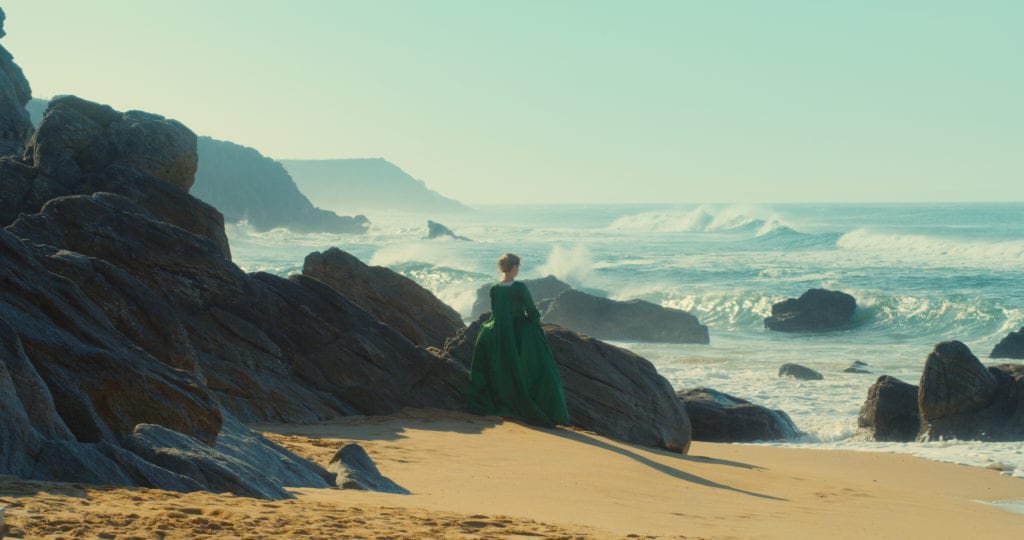
This is a film with very few scenes that include men. It focuses on the relationship between the women, not only Marianne, H?lo?se, and her mother, but also the family?s servant Sophie (Lu?na Bajrami). But even though there are no men present, the weight of paternalistic culture bears down on them all in oppressive ways. Each has her own way of being oppressed. For H?lo?se it is obviously being forced into marriage. She has had no voice in the matter. When speaking about the advantages of life in a convent, she includes ?Equality is a pleasant feeling.? Marianne has a certain freedom because since she will take over her father?s painting business, she is not required to marry. But even then, we learn later, she must submit her paintings under her father?s name to get them accepted. For Sophie, an unwanted pregnancy must be dealt with in unpleasant ways.
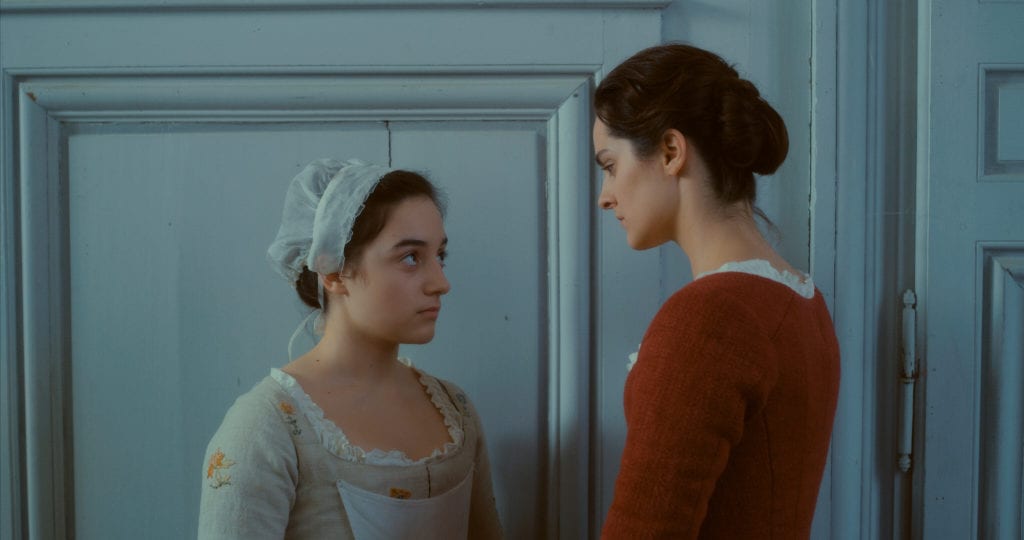
The film makes use of the Greek story of Orpheus and Eurydice, a story of lovers separated by death. Orpheus convinces the gods to allow Eurydice to return from Hades, but he fails to comply with the conditions just before they reach the outer world, and he loses his love forever. H?lo?se, Marianne, and Sophie discuss this story and offer reasons why Orpheus may have done what he did. Through it all the sense of doomed love is a constant presence.
This is a film of both the big and the small. There are sweeping vistas and strong emotions, but it is the little things that often carry the most weight. In the beginning, there is a sense of great isolation, especially for Marianne when she is dropped off on the island where H?lo?se lives with her mother. That isolation is chipped away slowly. There are also little bits of conversation that we discover were of great importance only later in the film. (E.g., a discussion of organ music in the convent compared to the sound of an orchestra will come to mind in the final scene.) It is the kind of film that has viewers thinking back and connecting ideas.
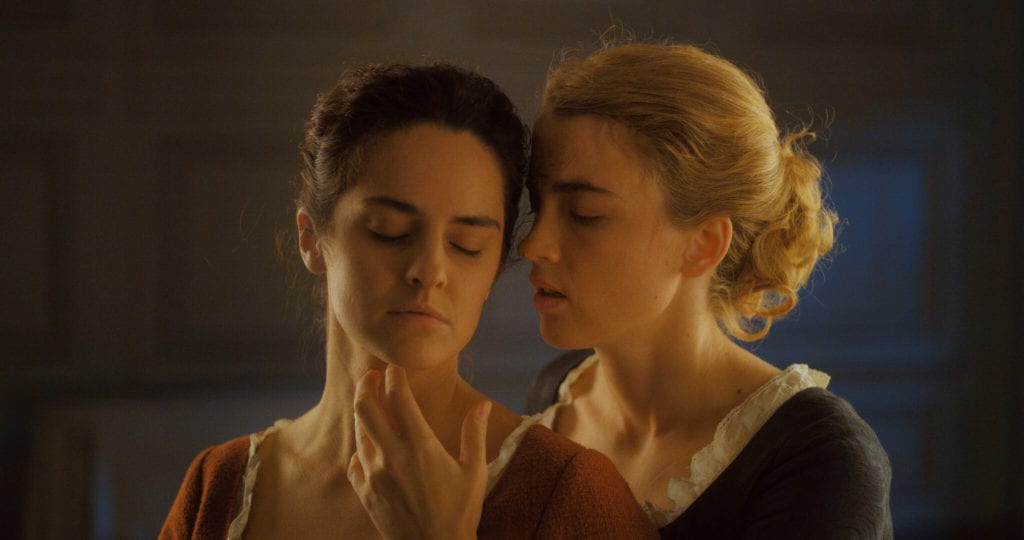
It is through this attention to small things that the film manages to speak volumes about women?s struggles in the world without really speaking about that directly. Instead we are engulfed in these lives that are prevented from fulfilment because the world will not allow such things for women. The world today may have improved in these respects, but is by no means free of such issues.
Photos courtesy of Neon.

